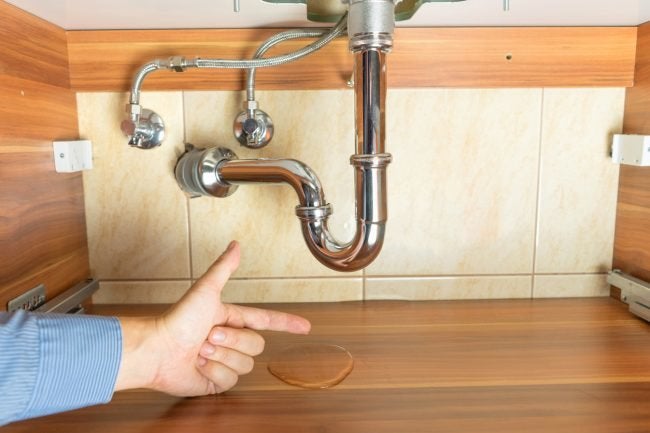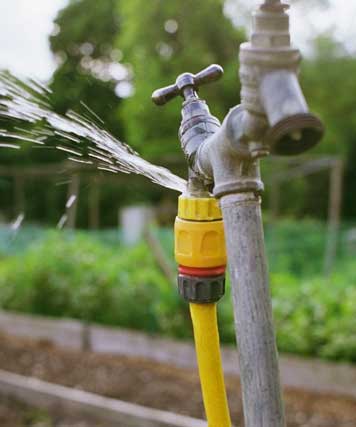Six Tested Strategies for Detecting Hidden Water Line Leaks
Six Tested Strategies for Detecting Hidden Water Line Leaks
Blog Article
They are making several good annotation related to Hacks to detect leaks overall in the article following next.

Early discovery of leaking water lines can reduce a possible calamity. Some tiny water leaks may not be noticeable.
1. Check Out the Water Meter
Every house has a water meter. Checking it is a proven manner in which assists you uncover leaks. For beginners, shut off all the water resources. Make certain nobody will purge, utilize the tap, shower, run the cleaning maker or dish washer. From there, go to the meter and also watch if it will alter. Since no person is utilizing it, there must be no activities. If it relocates, that suggests a fast-moving leakage. If you find no adjustments, wait an hour or two and examine back once again. This means you might have a sluggish leak that could also be underground.
2. Check Water Intake
If you detect abrupt adjustments, in spite of your usage being the same, it suggests that you have leakages in your plumbing system. An abrupt spike in your expense indicates a fast-moving leakage.
At the same time, a stable rise monthly, despite having the exact same practices, reveals you have a sluggish leakage that's also gradually rising. Call a plumber to extensively inspect your residential property, especially if you feel a warm area on your floor with piping below.
3. Do a Food Coloring Examination
When it comes to water consumption, 30% comes from bathrooms. If the shade somehow infiltrates your dish during that time without flushing, there's a leak in between the storage tank and bowl.
4. Asses Outside Lines
Do not forget to check your outdoor water lines as well. Must water permeate out of the link, you have a loosened rubber gasket. One little leak can throw away loads of water and surge your water expense.
5. Evaluate and also Analyze the Circumstance
Homeowners ought to make it a practice to inspect under the sink counters as well as also inside closets for any kind of bad odor or mold and mildew growth. These two warnings show a leakage so punctual interest is needed. Doing routine evaluations, even bi-annually, can save you from a major trouble.
Extra notably, if you understand your residence is already old, maintain a watchful eye on your heaters, pipes, pipelines etc. Look for discolorations and also weakening as most pipes and devices have a life expectancy. They will certainly also normally degrade because of damage. Don't wait for it to escalate if you think dripping water lines in your plumbing system. Call an expert plumber right now so you do not wind up with a horrible mess in your house.
Early discovery of dripping water lines can minimize a possible disaster. Some tiny water leakages might not be noticeable. Inspecting it is a surefire method that aids you find leakages. One small leakage can throw away heaps of water as well as spike your water bill.
If you believe leaking water lines in your plumbing system, do not wait for it to rise.
WARNING SIGNS OF WATER LEAKAGE BEHIND THE WALL
PERSISTENT MUSTY ODORS
As water slowly drips from a leaky pipe inside the wall, flooring and sheetrock stay damp and develop an odor similar to wet cardboard. It generates a musty smell that can help you find hidden leaks.
MOLD IN UNUSUAL AREAS
Mold usually grows in wet areas like kitchens, baths and laundry rooms. If you spot the stuff on walls or baseboards in other rooms of the house, it’s a good indicator of undetected water leaks.
STAINS THAT GROW
When mold thrives around a leaky pipe, it sometimes takes hold on the inside surface of the affected wall. A growing stain on otherwise clean sheetrock is often your sign of a hidden plumbing problem.
PEELING OR BUBBLING WALLPAPER / PAINT
This clue is easy to miss in rooms that don’t get much use. When you see wallpaper separating along seams or paint bubbling or flaking off the wall, blame sheetrock that stays wet because of an undetected leak.
BUCKLED CEILINGS AND STAINED FLOORS
If ceilings or floors in bathrooms, kitchens or laundry areas develop structural problems, don’t rule out constant damp inside the walls. Wet sheetrock can affect adjacent framing, flooring and ceilings.
https://www.servicemasterbyzaba.com/blog/how-to-detect-water-leakage-in-walls/

I am very serious about Hacks to detect leaks and I really hope you enjoyed the blog posting. Liked our piece? Please share it. Let others find it. Thanks a lot for your time. Kindly check up our blog back soon.
Choose excellence in emergency plumbing. Report this page